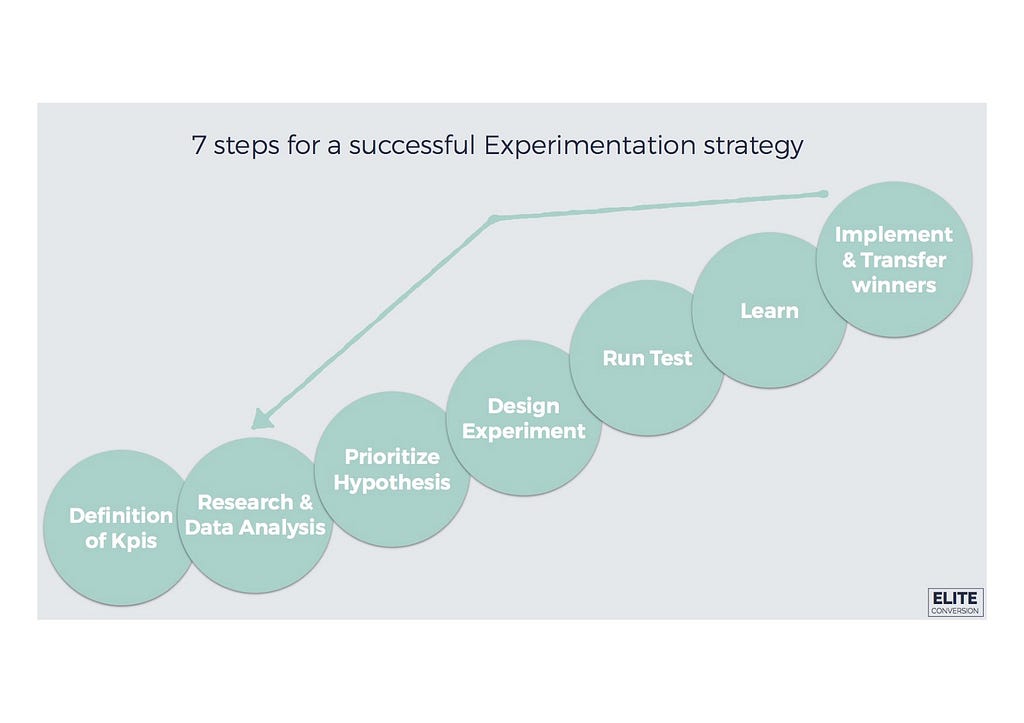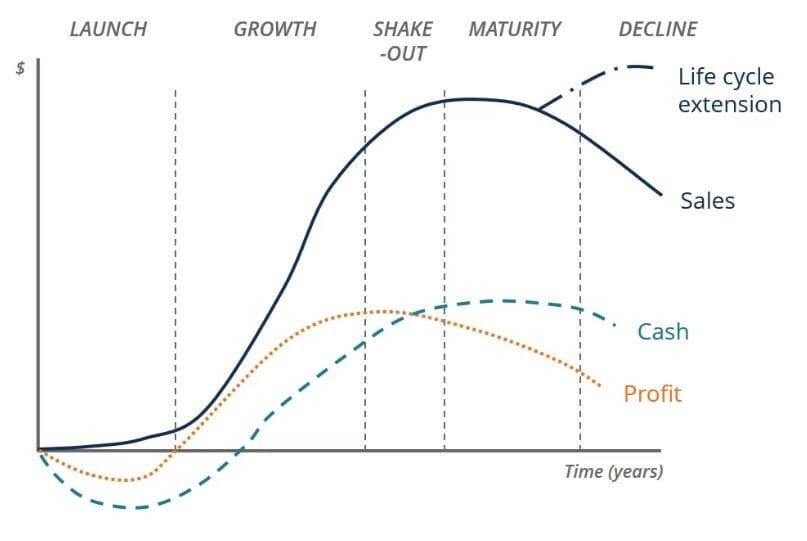Latest news about Bitcoin and all cryptocurrencies. Your daily crypto news habit.
Why startups are hiring platform product managers.
Note: This topic is quite broad, and I find it quite hard to come up with a comprehensive answer that is technically impeccable yet easy to understand. At the risk of failing miserably, I’ll give it a try nonetheless.
Product discovery is the hardest problem of true value creation and innovation. By extension, this means that the most important factor determining consistent growth for many startups is moving from a single customer product company to a platform company where shared components exist.
Hypergrowth startups are seeking new growth channels and encouraging experiments that would help them discover new products. The trumping idea here is that we are in growth over profit market, one that favors platform aggregators. And that gross profit margin will eventually improve as the startup achieves economies of scale while it grows and gains more revenue from different growth channels. A perfect example is Uber’s multi-sided platform strategy.
These type of experiments have created the need for platform product managers or vertical product leads, product managers that are capable of thinking outwards and making meaning of available data inwards. As a platform product manager, you will need a combination of both to discern how to leverage and streamline existing platforms to discover new products through research and experiment.
 platform organization supporting multiple products built on top of a set of shared components by Wyatt JenkinsProduct Discovery and Platforms
platform organization supporting multiple products built on top of a set of shared components by Wyatt JenkinsProduct Discovery and Platforms
M-PESA and Vodafone
The understanding of payment system and how it relates to the unbanked population and how that relates to economic freedom and an increase in a country’s GDP made clear the opportunities for critical solutions and opportunities. M-PESA was built on the back of such understanding.
Vodafone realized that mobile phones had the potential to deliver money in a fast, secure and low-cost way and that global growth of mobile phone use was phenomenal. Marrying the two could bring basic financial services to the ‘unbanked’; using their mobile phones, individuals could safely send money, purchase goods and services, and operate their businesses more efficiently. — Sagentia
Feature phones were already ubiquitous in the whole of Africa and the freedom that digital payment created was enjoyed by a certain section of the population. However, there was a missing piece to the puzzle: How do you extend such freedom to the unbanked population to create impact and growth for mobile network operators at scale? What happened next was an extensive market analysis by UK’s Department for International Development and Vodafone on how to leverage existing platforms to build a new product for the unbanked market.
Amazon
This 24-page report from CB Insights better explains Amazon’s growth strategy as a platform company.
“Our success at Amazon is a function of how many experiments we do per year, per month, per week, per day.” — Jeff Bezos.
Statement 1 — Amazon is multinational conglomerate specializing in e-commerce, retail, Internet, and technology.
Statement 2 — Mars is the most habitable planet after earth, humans will potentially live on Mars in the future.
Since both statements above are true we can, therefore, say Blue Origin (a company owned by the owner of Amazon) and Amazon will discover new products to power e-commerce for millions of people living and working on Mars in the future.
New Narratives = Insights from past + Systems Thinking + Future-casting — Seyi Fagbode.
The cost of innovating is exorbitant, platforms don’t get built in a day, a quarter or even a decade. This approach has created a new set of requirements for product managers. However, this role is not particularly new, it has existed for so long in big companies like Apple, Microsoft, Amazon, and Google under the growth team. As products or services become more valuable, usage increases, rapidly affecting growth. Platforms product managers are required to focus on building and creating value and growth managers, in turn, drive adoption and growth of the platform. It’s important not to create a silo between both teams instead to merge both teams under the product umbrella.
The Four Steps to Product Discovery
How teams approach product discovery varies and depends on several factors ranging from product roadmap, organizational bureaucratic structures, experimentation models and rigidity to the founding mission amongst other things.
So how should you approach product discovery as a platform product manager? These steps shared below are a combination of various steps already identified by companies like Mixpanel, Toptal, NFX, Google, Amazon, and Patreon.
- Understanding the Stage of a Startup: understanding what stage you’re in as a startup is crucial to understanding what growth levers to pull and when. A typical startup life cycle is the progression of its phases over time and is most commonly divided into five stages: launch, growth, shake-out, maturity, and decline.
Knowing where you are in this cycle is important in creating a platform that spans multiple product lines and enables you to make strategic decisions and trade-offs across different products.
2. Challenging assumptions: there is a very thin line between business ignorance and business intelligence. Typically product decisions are composed of a myriad of expectations that you can extrapolate from past experience, but for new products, this way of planning is often ineffective and misleading. Early-stage startups struggle to build experimentation into their product decisions as a result of maintaining a superior assertion that doesn’t fit changing needs of users.
There is much knowledge behind your assumptions especially when you are building products for millions of users that are influenced by different social and cultural factors. Using a “one size fits all” blanket is the bane of disaster for product teams. With enough empirical research, you can shatter your assumptions and in turn make good product decisions.
 Experimentation Framework from NUMA Barcelona
Experimentation Framework from NUMA Barcelona
3. Conducting empirical market and user research — innovative solutions often start with a genuine market need. Successful startups don’t just stumble on a gold mine, it takes years of insightful data to identify trends of behaviors and unspoken needs. Capturing effective feedback from your customers, however, is just the starting point. To identify truly actionable data with an on-market horizon of 3 to 5 years requires a more thoughtful approach.
Creating a ‘fail-fast’ experimentation approach requires a large amount of data, without data it is difficult to imagine the future. To help you better conduct an effective research as a platform product manager its important that you take a collaboration first approach with business, engineering, and design teams.
Understanding changing consumer needs and preferences, and industry shifts can be approached from a two-sided spectrum as primary and secondary research. With an exploratory primary approach, you can gather lots of open-ended data from many customers to better understand a problem or opportunity. The challenge here is how do you qualify and tailor a mix of observational and unstructured data. You can contextualize your findings within a band of what is technologically and commercially practicable.
Once you understand the larger market issues or opportunities, you can use a secondary research approach to gather information about certain markets and competitors that could guide your execution.
4. Build a custom experimentation model— so now you have data that your competitors probably don’t have access to. Running multiple experiments better enlightens your decision-making process and it’s important when you have access to multiple nodes of conflicting data. It provides the framework to conduct commercial experiments necessary to verify such early business judgments at scale.
Experiments allow you to uncover surprises that could redirect or refine your research. It also brings the technical feasibility of an idea into focus very early in the product decision process.
A scientific approach to creating an experimentation platform emphasizes an iterative learning process, practically when conducting experiments it’s better to model your system against a “deduction and induction” model.

The quasi and causal inference framework used by Netflix is a functional example of an experimentation platform as a powerful way to let data guide your decision-making. One area Netflix actively applies experiment to is changes to the quality of streaming experience. In such situations, they run a quasi-experiment and apply causal inference techniques to determine the impact of the change.
Building this type of model requires effective and open collaboration across product and engineering. As a platform product manager, you are required to foster such an environment where data and experimentation are cardinal pillars in your decision-making process.
A large number of startups fail to transition from a product company to a platform company or even launch new products that are successful. With better product discovery pattern and a considerable amount of informative data, you can execute with superior precision.
Platforms built on the back of actual customer data, research, and insights will inevitably lead your company to a path of vertical domination.
Further readings
- Platform Revolution: How Networked Markets Are Transforming the Economy and How to Make Them Work for You by Geoffrey G. Parker, Marshall W. Van Alstyne, and Sangeet Paul Choudary
- You can find so much goodness about experimentation and research platforms from Netflix research
- A/B Testing and Beyond at Netflix
- Making the Shift to Platform Product Management
- Platform Companies Are Becoming More Powerful — but What Exactly Do They Want? by The New York Times
- Quasi-Experimentation at Netflix
- Lessons from Coinbase’s Wild Ascent: Four Rules for Scaling
Platform Product Management was originally published in Hacker Noon on Medium, where people are continuing the conversation by highlighting and responding to this story.
Disclaimer
The views and opinions expressed in this article are solely those of the authors and do not reflect the views of Bitcoin Insider. Every investment and trading move involves risk - this is especially true for cryptocurrencies given their volatility. We strongly advise our readers to conduct their own research when making a decision.


